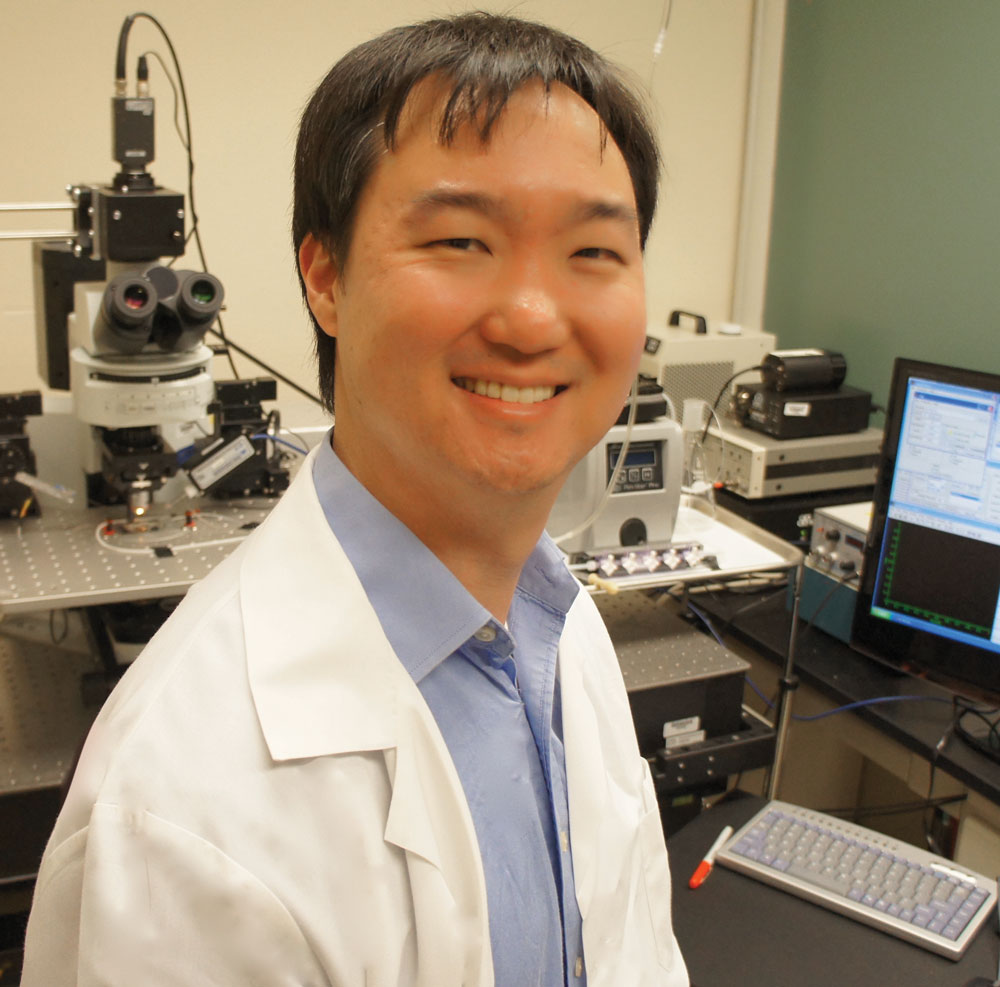Making Connections: How information about sound is processed across the brain’s hemispheres to create unified perceptual experiences
March 08, 2022
“Bilateral Integration of the Auditory Scene,” is an innovative research project exploring
how auditory perceptual experiences are generated by neural circuits in the brain.
Charles Lee, PhD, an associate professor at the LSU School of Veterinary Medicine,
is the Principal Investigator on the project, and has received a grant from the National
Institutes of Health for $1.8 million over five years to conduct the study, which begins July 1, 2022.
begins July 1, 2022.
The project investigates a completely overlooked neural circuit that combines auditory information across the two halves of the brain. Specifically, this neural pathway connects the auditory midbrain in one brain hemisphere to the auditory thalamus in the other hemisphere.
“We will assess neural activity in these brain regions and how they relate to sensorimotor behaviors. Although this is fundamental research, we expect that the results from the project will be relevant to many diseases of the central auditory system, such as tinnitus, hyperacusis, and presbycusis,” Dr. Lee said.
Most Americans will experience at least one of these auditory disorders over the course of their lifespan, according to a 2020 report by the National Institute on Deafness and Other Communication Disorders. Many hearing and language disorders arise from pathological alterations to central auditory pathways.
The auditory system must determine whether sound arriving at each ear originates from a single source or multiple sources. To accomplish this perceptual feat, central auditory neural circuits must accurately assess what or who made the sound, for example, a friend or foe, and whether the sound can safely be ignored.
“The auditory system must rapidly resolve a complex mixture of sounds into a coherent signal that has meaning. There is no rewinding with hearing. With seeing, you can always go back and look again,” said Dr. Lee, who sees an awe-inspiring intrinsic beauty in the neurons that he studies.
Auditory neural circuits must also accurately assess the regularity of sounds within a limited timeframe. Failure of this bilateral integrative process can account for many of the perceptual and behavioral impairments that accompany auditory disorders, such as tinnitus, presbycusis and central auditory processing disorders.
Dr. Lee’s research develops basic knowledge that will lead to improved methods for diagnosing, preventing, and treating auditory disorders associated with aging, development, trauma, and neurodegeneration. The roles of related neural networks also hold potential as therapeutic targets for autism, schizophrenia, and Alzheimer’s, diseases that impact millions of Americans.
“Surprisingly, the neural mechanisms that enable bilateral integration of acoustic information in higher brain regions remain largely unknown. Within the past 10 years, however, a research tool, optogenetics, has made it possible for neuroscientists to precisely control neural activity using light. We can investigate neural circuits in a way that was not accessible previously,” Dr. Lee said.
Although pathways between brain hemispheres have been well studied in auditory brainstem centers, much less is known about the functional organization of this type of circuitry in higher centers of the auditory brain. Dr. Lee’s long-term goals for the research are to understand the functional organization of these pathways in the processing of bilateral auditory information.
“These experiments are expected to reveal mechanistic features of auditory processing that will have a positive impact for neural diagnostics and treatments for central auditory impairments. I am glad that the NIH values fundamental research like ours that holds potential for significant breakthroughs,” Dr. Lee said.